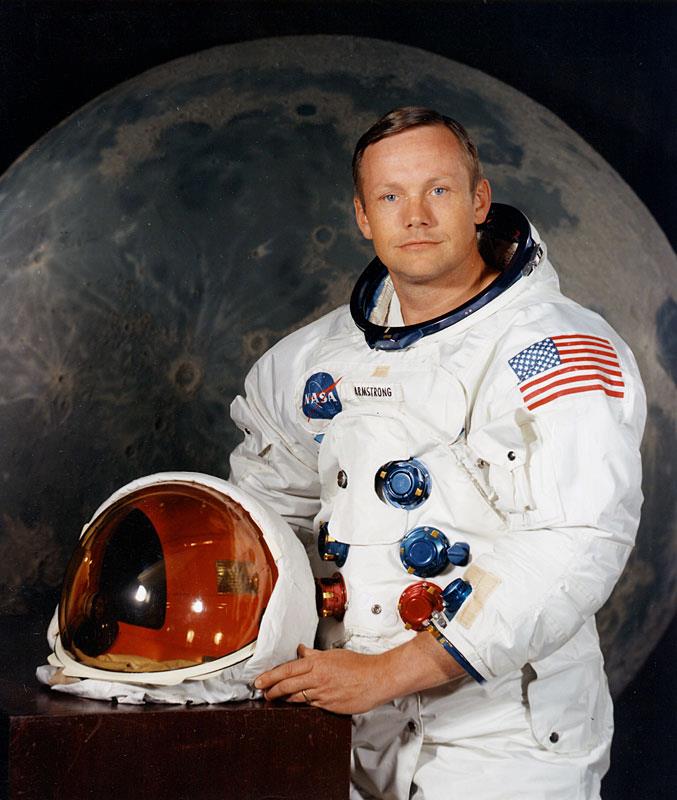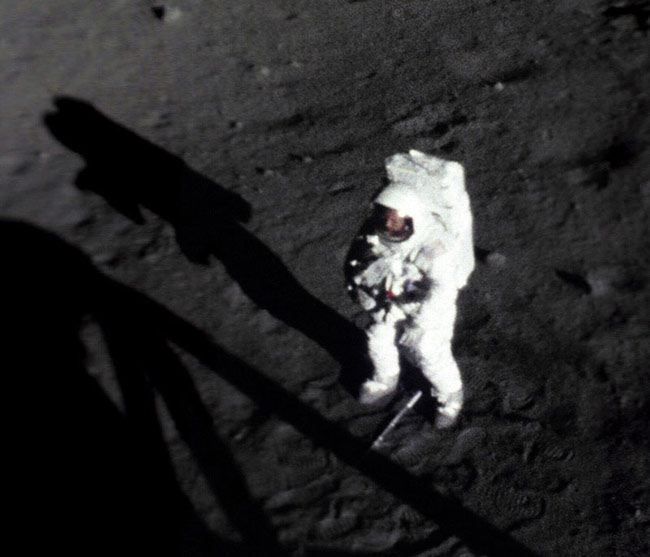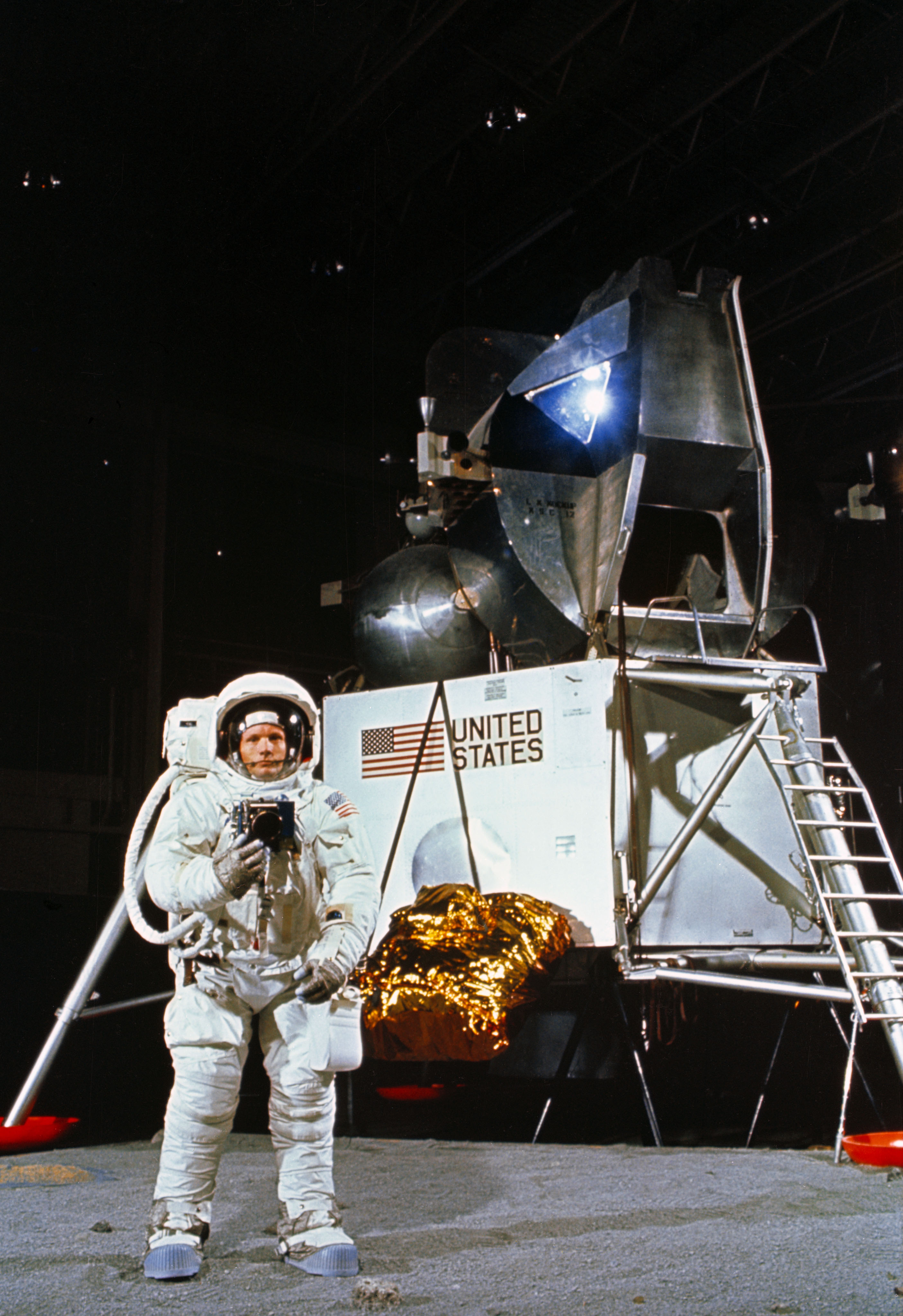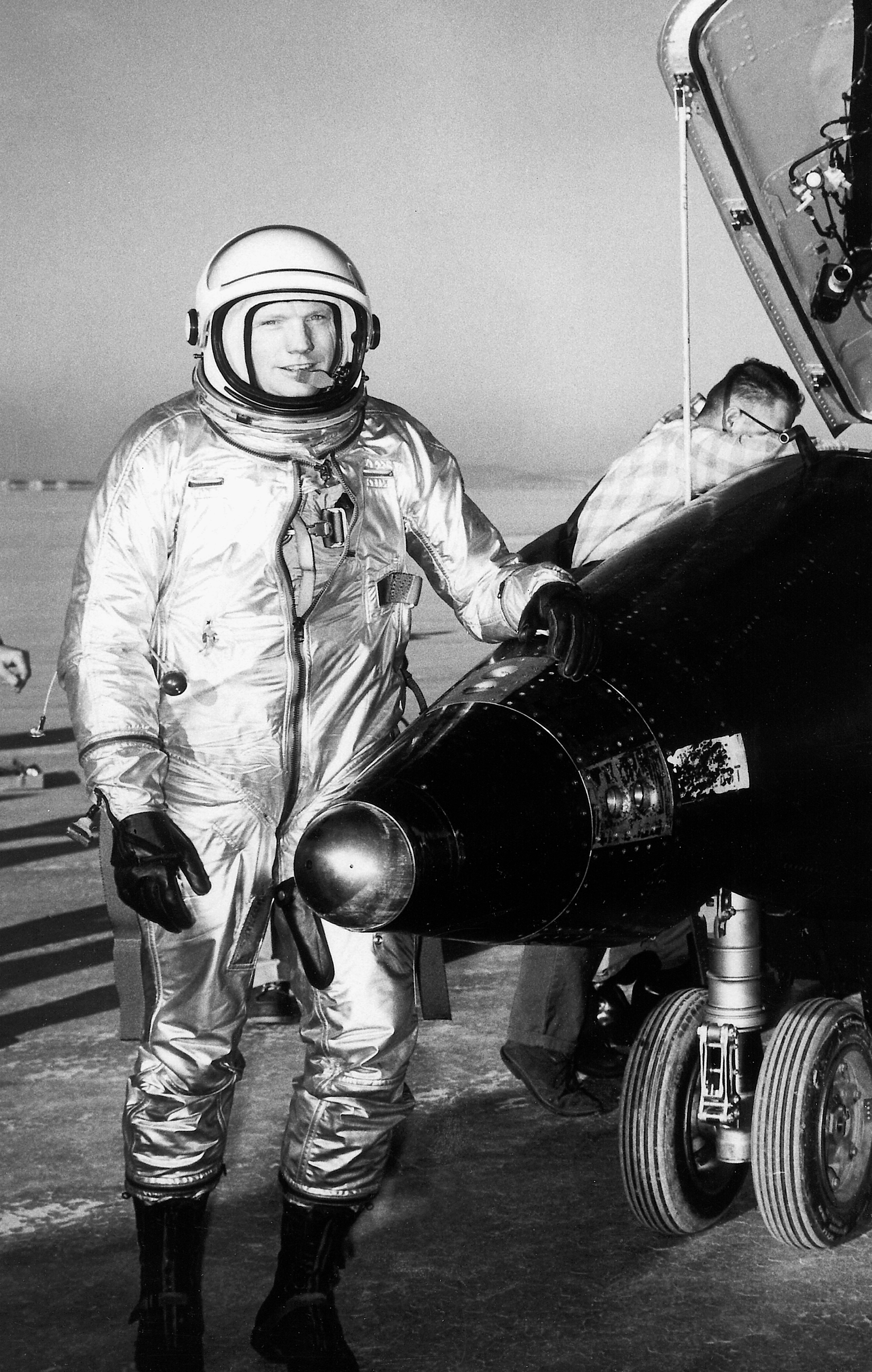Neil Armstrong (1930-2012): NASA Remembers an American Icon

Editor's Note: Neil Armstrong, the American icon and commander of the first manned mission to land humans on the moon, died Saturday (Aug. 25) due to complications with cardiovascular surgery. To remember Armstrong's career as a space pioneer, Navy aviator and friend, NASA released this statement and remembrance today:
Neil Armstrong, the first man to walk on the moon during the 1969 Apollo 11 mission, has died. He was 82.
His family has released the following statement:
“We are heartbroken to share the news that Neil Armstrong has passed away following complications resulting from cardiovascular procedures.
Neil was our loving husband, father, grandfather, brother and friend.

Neil Armstrong was also a reluctant American hero who always believed he was just doing his job. He served his Nation proudly, as a navy fighter pilot, test pilot, and astronaut. He also found success back home in his native Ohio in business and academia, and became a community leader in Cincinnati.
He remained an advocate of aviation and exploration throughout his life and never lost his boyhood wonder of these pursuits.
Get the Space.com Newsletter
Breaking space news, the latest updates on rocket launches, skywatching events and more!
As much as Neil cherished his privacy, he always appreciated the expressions of good will from people around the world and from all walks of life.
While we mourn the loss of a very good man, we also celebrate his remarkable life and hope that it serves as an example to young people around the world to work hard to make their dreams come true, to be willing to explore and push the limits, and to selflessly serve a cause greater than themselves.
For those who may ask what they can do to honor Neil, we have a simple request. Honor his example of service, accomplishment and modesty, and the next time you walk outside on a clear night and see the moon smiling down at you, think of Neil Armstrong and give him a wink.”
The family will be providing further updates at www.neilarmstronginfo.com.

Armstrong's words "That is one small step for (a) man, one giant leap for mankind," spoken on July 20, 1969, as he became the first person ever to step onto another planetary body, instantly became a part of history.
Those few words from the Sea of Tranquillity were the climactic fulfillment of the efforts and hopes of millions of people and the expenditure of billions of dollars. A plaque on one of the lander's legs that concluded "We came in peace for all mankind," further emphasized that Armstrong and fellow astronaut Edwin "Buzz" Aldrin were there as representatives of all humans.
But Armstrong's single sentence, though it was focused above the national divisions and quarrels of Earth, still signified unquestionably the U.S. victory in the desperate space race with the Soviet Union .

Neil A. Armstrong was born Aug. 5, 1930, in Wapakoneta, Ohio. He earned an aeronautical engineering degree from Purdue University and a master's in aerospace engineering from the University of Southern California.
He was a naval aviator from 1949 to 1952. During the Korean War he flew 78 combat missions.
In 1955 he joined the National Advisory Committee for Aeronautics (NACA), NASA's predecessor, as a research pilot at Lewis Laboratory in Cleveland.
Armstrong later transferred to NACA's High Speed Flight Research Station at Edwards AFB, Calif. As project pilot, he was in the forefront of the development of many high-speed aircraft, including the X-15 , which flew at 4,000 mph.
He flew more than 200 aircraft models. They included jet and rocket-powered planes, helicopters and gliders.
Armstrong was selected as an astronaut in 1962.
His first space flight was Gemini 8, which he commanded. He was the first civilian to fly a U.S. spacecraft. With fellow astronaut David R. Scott, Armstrong performed the first docking in space, with an Agena target satellite.
Less than an hour later their spacecraft began an unplanned rolling motion. After undocking, it increased to one revolution per second. One of the Gemini's 16 thrusters had stuck open because of an electrical short circuit.
Armstrong used re-entry thrusters to control the capsule, and after a 30-minute struggle, it was stabilized. Flight rules required a return to Earth after use of the re-entry thrusters, so the crewmembers fired retrorockets that sent Gemini 8 to a contingency landing zone in the Western Pacific.
The eventful flight on March 16, 1966, had taken just over 10 hours, 41 minutes.
Apollo 11 lifted off on July 16, 1969, with Armstrong, Aldrin and Mike Collins aboard. Collins remained in lunar orbit in the command module while Armstrong and Aldrin descended in the lunar module they had named Eagle to their historic landing on the moon's surface.
"Houston, Tranquillity Base here. The Eagle has landed," Armstrong said, telling a tense and waiting Earth that men had finally reached the lunar surface.
He and Aldrin spent about two hours exploring, gathering more than 50 pounds of moon rocks and setting up three scientific experiments. The next day, after 21 hours and 37 minutes on the moon, they fired Eagle's engine to begin the return to Collins and the command module.
The crew returned to Earth, landing near the USS Hornet in the Pacific after a mission of just over eight days. President Richard M. Nixon was on the aircraft carrier's deck to welcome them.
"This is the greatest week in the history of the world since the creation," Nixon told the three.
After 16 days in quarantine to protect Earth from any returned moon germs, the crew went on U.S. and international tours. Millions greeted them as heroes.
Armstrong later served as deputy associate administrator for aeronautics in the Office of Advanced Research and technology at NASA Headquarters. He resigned from the space agency in 1971. As a professor at the University of Cincinnati from 1971 to 1979, he was involved in both teaching and research.
He later went into the business world. Among other positions, he served for 10 years as chairman of Computing Technologies for Aviation Inc. of Charlottesville, Va. and later as chairman of AIL Systems Inc., an electronic systems company based in Deer Park, N.Y.
Armstrong was a fellow of the Society of Experimental Test Pilots and the Royal Aeronautical Society, and an honorary fellow of the American Institute of Aeronautics and Astronautics and the International Astronautical Federation.
He was a member of the National Academy of Engineering. He served as a member of the National Commission on Space in 1985 and 1986, and in 1985 was vice chairman of the Presidential Commission on the Space Shuttle Challenger Accident. He also was chairman of the Presidential Advisory Committee for the Peace Corps from 1971 to 1973.
Armstrong discusses the space race during an Apollo 11 40th anniversary celebration in 2009
Seventeen countries decorated Armstrong. He received many special honors, including the Presidential Medal of Freedom, thCongressional Space Medal of Honor, NASA's Ambassador of Exploration Award, the Explorers Club Medal, the Robert H. Goddard Memorial Trophy, the NASA Distinguished Service Medal, the Harmon International Aviation Trophy, the Royal Geographic Society's Gold Medal, the Federation Aeronautique Internationale's Gold Space Medal, the American Astronautical Society Flight Achievement Award, the Robert J. Collier Trophy, the AIAA Astronautics Award, the Octave Chanute Award, and the John J. Montgomery Award.
FollowSPACE.com on Twitter @Spacedotcom. We're also on Facebook & Google+.
Join our Space Forums to keep talking space on the latest missions, night sky and more! And if you have a news tip, correction or comment, let us know at: community@space.com.

The National Aeronautics and Space Administration (NASA) is the U.S. government agency in charge of the civilian space program as well as aeronautics and aerospace research. Founded in 1958, NASA is a civilian space agency aimed at exploring the universe with space telescopes, satellites, robotic spacecraft, astronauts and more. The space agency has 10 major centers based across the U.S. and launches robotic and crewed missions from the Kennedy Space Center in Cape Canaveral Florida. It's astronaut corps is based at the Johnson Space Center in Houston. To follow NASA's latest mission, follow the space agency on Twitter or any other social channel, of visit: nasa.gov.









